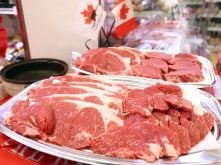Good corral design is important, but it’s only part of the recipe for good livestock handling, says one of the field’s leading experts.
Temple Grandin told a recent Alberta Sheep Symposium that handling animals with a minimum amount of stress is key to their health.
Numerous studies of cattle show that calm cattle gain more weight and give more milk, she said.
More studies have been done with cattle, Grandin added, but said it’s safe to say stress would cause similar problems in sheep.
Read Also

More factors affecting winter weather
When you combine a weak La Niña, early Siberian snow, and a warm northern Pacific, it’s easy to see why long-range winter forecasting is so complex.
Sheep don’t show pain or fear if they’re sick or hurt. Cattle and pigs twitch their tails, squeal or flinch to show pain or fear, but sheep give few clues. Ear twitching may be one of the few visible signs that sheep are stressed, and they will bunch up when scared.
However, Grandin said sheep aren’t immune to fear or pain just because they don’t show it. Blood tests for the hormone cortisol, a stress marker in livestock, show elevated stress levels in sheep after a stressful event. Being left on their own is one of the biggest stressors for sheep.
“Isolation stress, sheep get real upset about that. The stress hormone levels were off the charts,” Grandin said.
“Fear is a very strong stressor. Sheep don’t really show their fear. They make themselves look OK when they’re not. They’re the ultimate prey animal.”
Grandin said tests have shown sheep’s cortisol levels increase dramatically when they’re bitten by dogs.
Like other livestock, a sheep’s first handling experience will often set the stage for how they react in the future. Grandin recommended feeding sheep a mouthful of grain after they leave the squeeze to give them a positive memory of the handling system.
“First experiences can make a really bad impression or a good impression,” she said.
“When animals voluntarily co-operate, they will have less stress.”
Animals also become scared around unfamiliar people. Grandin said these people should walk or drive through the herd to get the animals used to them. This will reduce the likelihood of producing dark cutters.
Grandin said producers also must find ways to deal with painful animal husbandry practices such as dehorning or castrating adult cattle.
“Dehorning is the worst. It hurts the most.”
She added that more research is needed on the effectiveness of anesthetic and analgesic on livestock during painful procedures such as dehorning.














